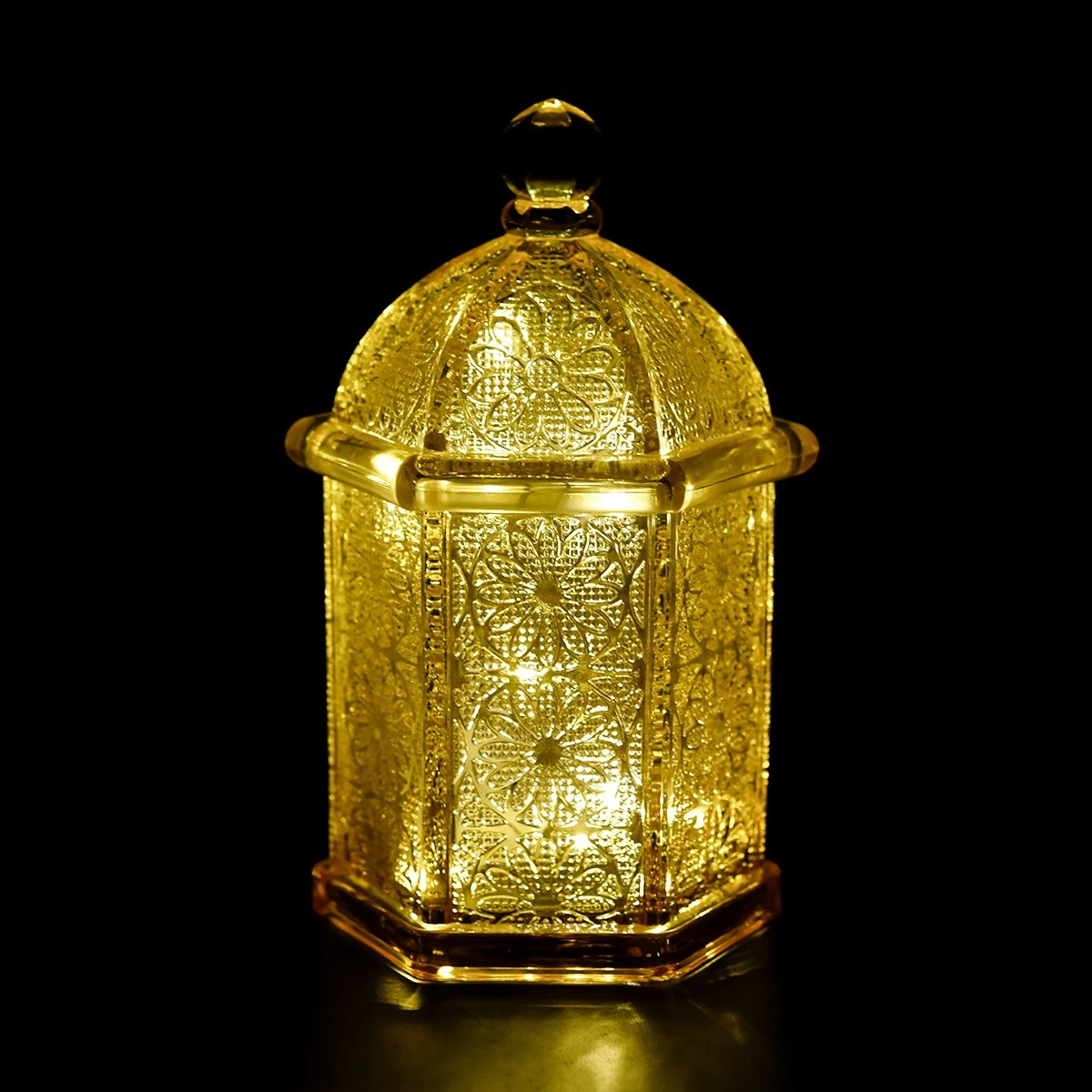Based on an analysis of industry trends, consumer preferences, and design innovations, the candle container styles favored by future scented candle enthusiasts will exhibit the following five major trends, integrating functionality, aesthetics, and cultural significance:
I. Cultural Narrative Containers: European and American Aesthetics and Localized Design

1. The integration of traditional patterns with modern craftsmanship:
- The surface of the container integrates local traditional patterns, such as those inspired by Moroccan candle holders, and is realized through techniques like relief, glaze, or openwork. This endows the container with cultural significance and storytelling. Each detail embodies the artistic aspirations and philosophical outlook of the Moroccan people, transforming the container into a medium for cultural dissemination.
- China brands such as Guanxia transform regional cultural imagery into container shapes and textures through themes like "Kunlun Boiling Snow" and "Jiangnan Bamboo Sea," combining them with Morandi color schemes or hazy gradient glazes to evoke a poetic atmosphere.
2. Architectural Inspiration and Landmark Symbols
- The outline of the container draws inspiration from historical architecture (e.g., Baroque-style candle holders) or incorporates urban symbols (such as window decorations and brick carvings). This design approach resonates with consumers' emotional connection to "urban memories," thereby enhancing the cultural and aesthetic value of the product.
II. Sustainable Materials: Environmental Protection and Natural Texture
1. Application of low-carbon innovative materials:
- Plant-based materials: Containers made from renewable resources such as shea butter wax and soy wax have a carbon footprint that is only 7.8% of traditional materials, aligning with the "dual carbon" trend.
- Waste recycling:
Coffee grounds mixed with wax cups, cold-dried cement containers, and other eco-friendly options feature unique textures and low energy consumption, exemplified by Darren's "Way of Nature" series.
- Natural accessories: Rattan edge wrapping, straw lids, and wooden cup lids (walnut/maple) enhance rustic appeal and reinforce the concept of "natural coexistence."
2. Reusable design:
Optimized container structures (e.g., wide-mouthed bottles, thick-walled glass) facilitate repurposing as pen holders or makeup brush holders after the candle burns out, reducing waste.
III. Emotional Interaction Design: Multi-Sensory Experience and Functional Enhancement
1. Healing through visual and tactile sensations:
- Application of color psychology: Dreamy macaron colors and low-saturation Morandi color palettes create soothing atmospheres. Bright tones in spring and summer stimulate vitality, while calm tones in autumn and winter enhance warmth.
- Matte materials: Soft light effects combined with semi-transparent textures produce a hazy glow when ignited, enhancing immersion.
2. User-friendly experience:
- Smart accessories: Built-in core scissors storage slots, magnetic candle extinguisher covers, anti-scald silicone sleeves, etc., address traditional usage pain points (e.g., black smoke, scalding hands)
- Customizable combinations: Modular designs allow consumers to select cup bodies, lids, and labels themselves, such as Roetell's embossed logos and color-blocking glaze options.
IV. Technology Empowerment: Customization and Digital Process Innovation.
1. Innovation in surface treatment technology:
- 3D printing and UV transfer: Achieve intricate patterns such as lace textures, marble effects, and geometric hollowing, surpassing traditional glass processing limitations. Qingdao Kingking's "Lace Glass Wax Cup" exemplifies this craftsmanship.
- Intelligent temperature-sensitive coatings: Hidden patterns (e.g., snowflakes, leaf veins) emerge as temperatures change, enhancing interactive enjoyment.
2. Flexible supply chains support small-batch customization:
Brands can rapidly create samples via digital modeling to meet niche demands (e.g., IP collaborations, commemorative containers), as seen in Darren's collaboration with Disney on an IP fragrance series.
V. Minimalism and Geometric Forms: Modernist Aesthetic Dominance
1. Abstract geometric structures:
Hexagonal, spherical, asymmetrical cuts, and other three-dimensional shapes replace traditional cylinders, paired with metal or matte ceramic materials to complement minimalist home styles. Roetell's geometric series appeals to younger generations for its "visual contrast between edges and light/shadow."
2. Transparency and material juxtaposition:
High borosilicate glass highlights wax purity due to its high light transmittance and heat resistance, suitable for "containerless" designs. Material combinations (e.g., glass + wooden lid, ceramic + metal trim) balance natural and industrial aesthetics.
The core value of future container design lies in:
- Cultural expression: Oriental patterns, architectural inspiration, localized narratives
- Sustainability: Plant-based materials, waste recycling, reusable structures
- Technological experience: 3D printing textures, temperature-variable coatings, smart accessories
Contemporary consumers purchase not only candles but also "containers that burn the ritualistic sense of time." When functionality and aesthetics converge, the empty container itself becomes a commemorative carrier of life emotions.
Future aroma containers will transcend mere functionality, becoming a triadic fusion of cultural symbols, environmental declarations, and emotional interfaces. To win the favor of Generation Z and the high-end market, brands must prioritize "visual differentiation + functional humanization + narrative resonance."